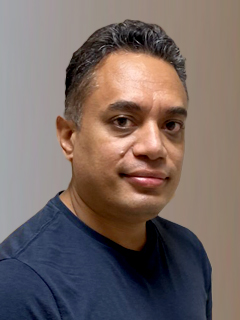HOW CAN WE HELP YOU? Call 1-800-TRY-CHOP
In This Section

Dr. Karmacharya is a biomedical researcher who works in the field of therapeutic ultrasound.
Bio
Dr. Karmacharya is a biomedical researcher currently working in the department of Radiology at CHOP. He graduated from Tribhuvan University, Kathmandu, Nepal with a Master's degree of Science with Chemistry major. He then joined the Department of Chemistry at Inha University, Incheon, South Korea where he graduated with a PhD in Bioinformatics and Biochemistry, specializing in molecular biology, biochemistry, and bioinformatics. After the completion of his PhD, he began to work as a researcher in the field of therapeutic ultrasound in preclinical animal and cellular models. He developed low-intensity ultrasound for the treatment of brain edema, Parkinson’s disease, and diabetic retinopathy in the Department of Physiology & Biophysics at Inha University College of Medicine, Incheon, South Korea. He further extended his research on therapeutic ultrasound in the Department of Radiology at Perelman School of Medicine, University of Pennsylvania, where he developed antivascular ultrasound therapy for the treatment of hepatocellular carcinoma.
His top skills include operating low-intensity ultrasound waves in various modes, encompassing a wide range of ultrasound frequency, intensity, burst modes, and insonation time with or without incorporation of ultrasound-enhancing agents such as microbubbles, or chemical drugs for the disease treatment. His research holds a unique place in the field because use of noninvasive, low-intensity ultrasound to treat liver, brain, and eye diseases has minimal side effects and holds a huge potential for clinical therapeutics. The skillset he uses in his research is unique as it involves using low-intensity ultrasound, rather than the conventional chemical drugs or radiation therapies. This technology involves utilizing the mechanical and/or thermal energy of ultrasound to cure the diseases noninvasively and holds great possibilities as it can be performed alone, or in combination with the existing therapeutic modalities such as chemical drugs or radiation therapies.